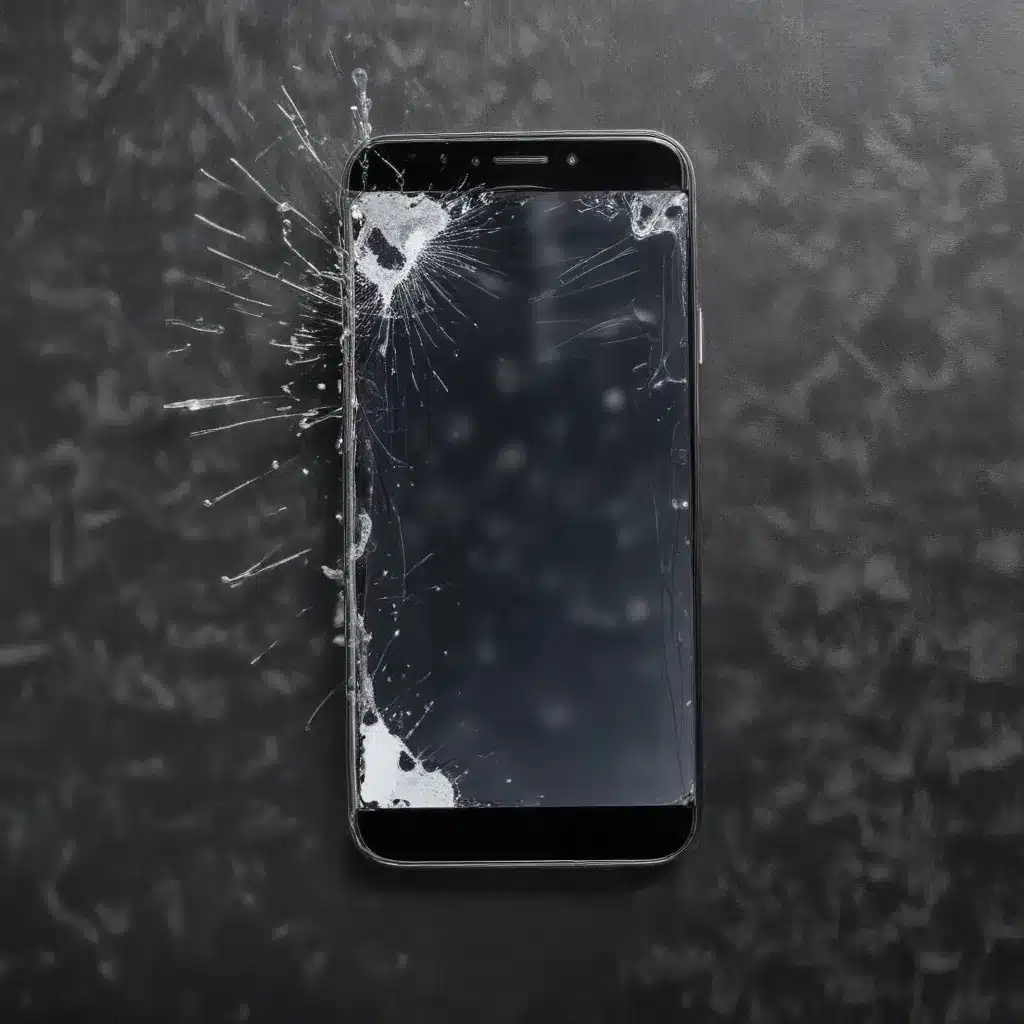
Understanding the Challenge
As an experienced IT professional, I’ve encountered numerous situations where users have faced the frustrating predicament of a broken smartphone display, preventing them from accessing the valuable data stored on their device. Whether it’s crucial business documents, cherished family photos, or important text messages, the inability to retrieve this information can be a daunting and stressful experience.
The good news is that even with a damaged or unresponsive screen, there are various techniques and considerations that can help you recover the data from your smartphone. In this comprehensive article, we’ll explore the steps you can take to salvage your information and ensure your important data is safely backed up, even in the face of a broken display.
Assessing the Extent of Damage
The first step in recovering data from a damaged smartphone display is to assess the extent of the damage. Is the screen completely shattered, rendering it unresponsive to touch? Or is the display still functional, albeit with some visual impairment?
If the screen is completely black and unresponsive, it’s likely that the display itself has been damaged beyond the point of being able to interact with the device directly. In such cases, you’ll need to explore alternative methods to access the data.
On the other hand, if the screen is still partially functional, with some areas of the display remaining visible, you may be able to use a combination of external input devices and navigational techniques to access your data.
Connecting an External Input Device
One of the most effective ways to interact with a smartphone with a damaged display is to connect an external input device, such as a USB keyboard or a Bluetooth keyboard. This allows you to navigate the device’s user interface and access the necessary applications and settings without relying on the touchscreen.
To do this, you’ll need to obtain a compatible USB or Bluetooth keyboard. For devices with a USB-C or Lightning port, you can use a USB-C or Lightning to USB adapter to connect the keyboard directly to the smartphone. Alternatively, for Bluetooth-enabled smartphones, you can pair a Bluetooth keyboard and use it to control the device.
Once the external input device is connected, you’ll need to enable accessibility features, such as VoiceOver or TalkBack, to provide auditory feedback and guidance as you navigate the device’s interface. This can be a bit tricky, as the process may vary depending on the smartphone’s operating system and version, but with patience and persistence, you should be able to access the necessary menus and settings.
Utilizing Data Recovery Software
If the physical damage to the smartphone’s display is too severe to allow for direct interaction, you may need to resort to data recovery software to retrieve your important files. These software solutions are designed to access the device’s internal storage and extract the data, even if the screen is not functioning properly.
Several reputable data recovery software options are available, such as EaseUS MobiSaver, Wondershare Dr.Fone, and Tenorshare UltData. These tools can be used to scan the device’s storage and recover a wide range of file types, including photos, videos, documents, and messages.
It’s important to note that the effectiveness of these software-based solutions may vary depending on the extent of the physical damage and the smartphone’s specific hardware configuration. In some cases, the data recovery software may be able to extract the majority of your files, while in others, the recovery process may be more limited.
Seeking Professional Assistance
If the above methods prove unsuccessful or you’re unsure of the best course of action, it’s recommended to seek the assistance of a professional data recovery service. These specialized companies have access to advanced equipment and techniques that may be able to recover data from severely damaged smartphones, even in cases where the display is completely non-functional.
Some reputable data recovery services to consider include DriveSavers, Kroll Ontrack, and SalvageData. These providers often have the ability to physically access the smartphone’s internal storage and extract the data, even if the device itself is not powering on or responding to input.
Keep in mind that professional data recovery services may come at a higher cost, but in situations where critical data is at stake, the investment can be well worth it to ensure the successful recovery of your important information.
Preventing Future Data Loss
While recovering data from a damaged smartphone display can be a challenging task, the best approach is to take proactive steps to prevent such situations in the first place. Regular backups of your smartphone’s data, whether through cloud-based services or local storage options, can ensure that you have a reliable fallback in the event of a hardware failure or physical damage.
https://itfix.org.uk/ recommends implementing a comprehensive backup strategy, such as utilizing cloud storage services like iCloud, Google Drive, or Dropbox, as well as regularly syncing your smartphone’s data to a personal computer or external hard drive. By establishing these backup routines, you can significantly reduce the risk of losing critical data in the event of a smartphone display malfunction.
Conclusion
Recovering data from a damaged smartphone display can be a complex and frustrating process, but with the right approach and the right tools, it is often possible to salvage your important information. By understanding the extent of the damage, leveraging external input devices, utilizing data recovery software, and seeking professional assistance if necessary, you can increase your chances of successfully retrieving your data.
Remember, the best defense against data loss is to have a robust backup strategy in place. By regularly backing up your smartphone’s data, you can minimize the impact of a broken display and ensure that your critical information is always secure and accessible, even in the face of unexpected hardware failures.












